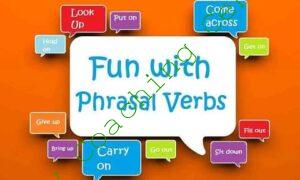Which system of spellings Should I Use?
It is fine to use both British and American grammar, spelling and vocabulary.
The IELTS test is supposed to represent ‘real life’ and in the real world people use both American and British English interchangeably all the time.
The one thing you should not do is try to show the examiner how you know the differences and try to show off your knowledge of American and British English. In general, you should choose one and stick with it, but it is fine if you occasionally use the other.
Here are some of the main differences in the spellings.
| American | British |
| or vs. our | |
| color | colour |
| favorite | favourite |
| honor | honour |
| ze vs. se | |
| analyze | analyse |
| criticize | criticise |
| memorize | memorise |
| ll vs. l | |
| enrollment | enrolment |
| fulfill | fulfil |
| skillful | skilful |
| er vs. re | |
| center | centre |
| meter | metre |
| theater | theatre |
| og vs. ogue | |
| analog | analogue |
| catalog | catalogue |
| dialog | dialogue |
| e vs. oe or ae | |
| encylopedia | encylycopaedia |
| maneuver | manoeuvre |
| medieval | mediaeval |
| ck or k vs. que | |
| bank | banque |
| check | cheque |
| checker | chequer |
| dg vs. dge (or g vs. gu) | |
| aging | ageing |
| argument | arguement |
| judgment | judgement |
| ense vs. enze | |
| defense | defence |
| license | licence |
| Other | |
| jewelry | jewellery |
| draft | draught |
| pajamas | pyjamas |
| plow | plough |
| program | programme |
| tire | tyre |
In British English, words that end in -l preceded by a vowel usually double the -l when a suffix is added, while in American English the letter is not doubled. The letter will double in the stress is on the second syllable.
| Base Word | American | British |
| counsel | counseling | counselling |
| equal | equaling | equalling |
| model | modeling | modelling |
| quarrel | quarreling | quarrelling |
| signal | signaling | signalling |
| travel | traveling | travelling |
| excel | excelling | excelling |
| propel | propelling | propelling |
Spelling of verbs
This is related to formation of the past participle for verbs. For a complete list of irregular verb spellings. Below is a sampling of the three main categories of differences with verbs.
-ed vs. -t
The first category involves verbs that use -ed or -t for the simple past and past participle. Generally, the rule is that if there is a verb form with -ed, American English will use it, and if there is a form with -t, British English uses it. However, these forms do not exist for every verb and there is variation. For example, both American and British English would use the word ‘worked’ for the past form of ‘to work’, and in American English it is common to hear the word ‘knelt’ as the past tense of ‘to kneel’.
| Base form | American | British |
| to dream | dreamed | dreamt |
| to leap | leaped | leapt |
| to learn | learned | learnt |
base form vs. -ed
The second category of difference includes verbs that use either the base form of the verb or the -ed ending for the simple past.
| Base form | American | British |
| to fit | fit | fitted |
| to forecast | forecast | forecasted |
| to wed | wed | wedded |
irregular vs. -ed
The third category of difference includes verbs that have either an irregular spelling or the -ed ending for the simple past.
| Base form | American | British |
| to knit | knit | knitted |
| to light | lit | lighted |
| to strive | strove | strived |
Below are some common words that are different in America:
| Flat | Apartment |
| Car Park | Parking Lot |
| Chips | Fries |
| Crossroads | Intersection |
| Bin | Trash Can |
| Holiday | Vacation |
| Lift | Elevator |
| Footpath | Sidewalk |
| Petrol | Gas |
| Post | |
| Pub | Bar |
| Return Ticket | Round-Trip |
| Roundabout | Traffic Circle |
| Rubber | Eraser |
| Shop | Store |
| Timetable | Schedule |
| Trousers | Pants |
| Tube | Subway |
Difference in Spelling
Below are some common words that Americans spell differently. Do you notice any patterns?
| Cheque | Check |
| Cosy | Cozy |
| Colour | Color |
| Centre | Center |
| Litre | Liter |
| Theatre | Theater |
| Neighbour | Neighbor |
| Labour | Labor |
| Apologise | Apologize |
| Organise | Organize |
| Recognise | Recognize |
| Analyse | Analyze |
| Defence | Defense |
| Licence | License |
| Offence | Offense |
Difference in Grammar
There are many subtle differences in grammar including:
- use of present perfect tense
- verb agreement with collective nouns
- use of the verbs ‘have’ and ‘take’
- use of auxiliaries and modals
- use of prepositions
- past tense forms
Why spellings are different in UK and US English
The main difference is that British English keeps the spelling of words it has absorbed from other languages, mainly French and German. Whilst American English spellings are based mostly on how the word sounds when it is spoken.
English was introduced to what is modern day America in the 17th century by the British settlers. Since then the language has evolved and has been influenced by the many waves of immigration to the USA.
The spelling of British English words were cemented by Samuel Johnson in what is considered to be one of the most famous dictionaries in the world. It took Johnson, and six helpers, just over eight years to curate the 40,000 words that appeared in ‘A Dictionary of the English Language’, which was publihsed in 1755.
Similarly in America ‘A Compendious Dictionary of the English Language’ was first printed in 1806 and popularised the American English spellings that were being used instead of the British English spellings of words, such as color instead of colour.
The author was Noah Webster who followed up the original dictionary in 1828 with his ‘An American Dictionary of the English Language’ which had over 70,000 words.
- Preference Sentences
 Find a number of examples of Preference sentences and clear your understanding how to use correctly rather, prefer, would prefer, would rather….
Find a number of examples of Preference sentences and clear your understanding how to use correctly rather, prefer, would prefer, would rather…. - Rather / Rather than / Instead of
 Check here a number of example sentences to know how to use Rather, Rather than, Instead of correctly. This will help you in avoiding errors in IELTS writing.
Check here a number of example sentences to know how to use Rather, Rather than, Instead of correctly. This will help you in avoiding errors in IELTS writing. - Check your grammar level in English
 This is approximately your current level of English and you should make a plan to further improve your English.For example, if you are at Pre-intermediate level currently, you should make plan to achieve Intermediate level.
This is approximately your current level of English and you should make a plan to further improve your English.For example, if you are at Pre-intermediate level currently, you should make plan to achieve Intermediate level. - Sentences with PUT
 Check herein list of English sentences with PUT.Punjabi translation is also given.
Check herein list of English sentences with PUT.Punjabi translation is also given. - Sentences with “SO”
 Find here a list of sentences with SO.Punjabi translation is also given for easy understanding of accurate use of word “So”
Find here a list of sentences with SO.Punjabi translation is also given for easy understanding of accurate use of word “So” - Difference between “So” and “So That”
 Know the difference between so and so that.As a conjunction, ‘so’ is used to show the effect or result.As a conjunction ‘so that’ is used to talk about purpose
Know the difference between so and so that.As a conjunction, ‘so’ is used to show the effect or result.As a conjunction ‘so that’ is used to talk about purpose - Sentences with BECAUSE
 Learn through example sentences how to use BECAUSE accurately.English sentences with Punjabi translation are given for easy understanding.
Learn through example sentences how to use BECAUSE accurately.English sentences with Punjabi translation are given for easy understanding. - Sentences with TAKE
 Learn through example sentences how to use TAKE accurately.English sentences with Punjabi translation are given for easy understanding.
Learn through example sentences how to use TAKE accurately.English sentences with Punjabi translation are given for easy understanding. - Sentences with MAKE
 Learn through example sentences how to use MAKE accurately.English sentences with Punjabi translation are given for easy understanding.
Learn through example sentences how to use MAKE accurately.English sentences with Punjabi translation are given for easy understanding. - Phrasal Verbs List
 Phrasal verbs are usually two-word phrases consisting of verb + adverb or verb + preposition. Think of them as any other English vocabulary. Study them as you come across them, rather than trying to memorize many at once. Check here most common phrasal verbs with meaning and examples.
Phrasal verbs are usually two-word phrases consisting of verb + adverb or verb + preposition. Think of them as any other English vocabulary. Study them as you come across them, rather than trying to memorize many at once. Check here most common phrasal verbs with meaning and examples.
